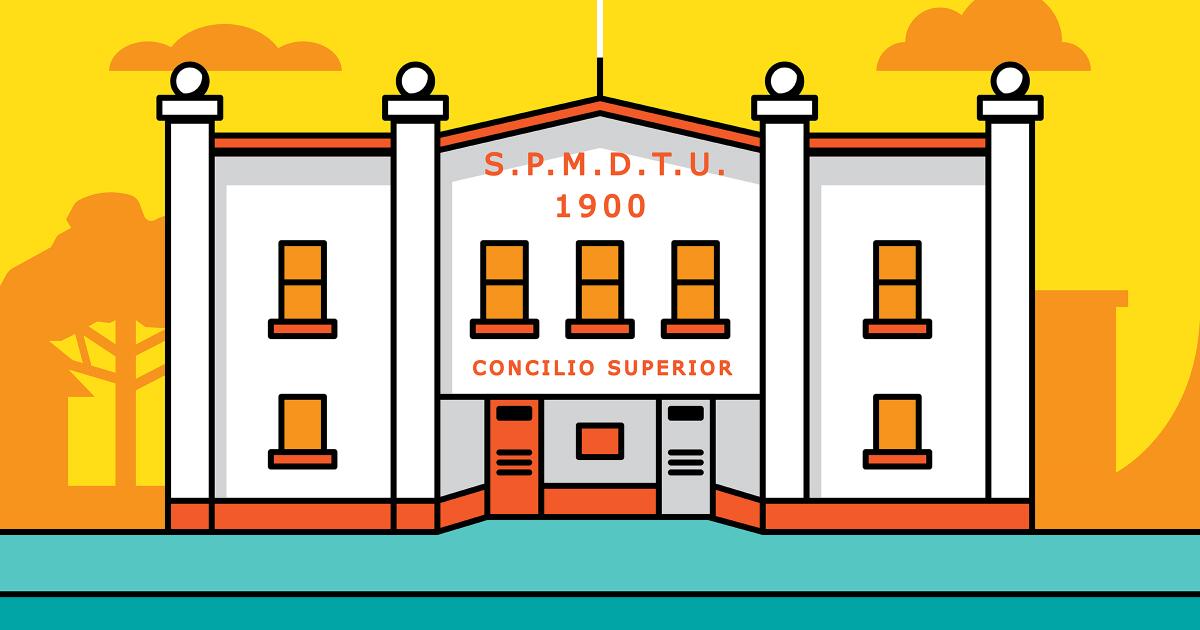From Española, U.S. Highway 285 slowly ascends through the Carson National Forest. Piñon trees — the hardy pine of New Mexico — line the foothills. They produce a wonderful nut, but the harvest has declined because of climate change.
The towns, few and far in between, all have tough names. El Duende. Ojo Caliente. Tres Piedras. No Agua.
Seven days. Seven states. Nearly 3,000 miles. Gustavo Arellano talks to Latinos across the Southwest about their hopes, fears and dreams in this election year.
After I crossed into Colorado at sunset, the landscape immediately flattened. I was now in the San Luis Valley, one of the largest alpine valleys in the world.
In the 1840s, Hispanos from what’s now northern New Mexico migrated here and set up small farms and towns. They called themselves manitos — short for “hermanitos,” little brothers — and kept the distinct culture of their original homeland.
When the area was transferred to the Territory of Colorado in 1861, manitos petitioned the federal government to remain part of New Mexico, only to be rebuffed.
They’ve been a people apart ever since.
After nightfall in Antonito, population 674, people drank outside a bar and streamed out of a Family Dollar. In the darkness stood a two-story Spanish Revival-style building with “S.P.M.D.T.U.,” the number 1900 and “Concilio Superior” painted on the front and illuminated in dramatic flood lighting.
This is the headquarters of the Sociedad Protección Mutua de Trabajadores Unidos — Society for the Mutual Protection of United Workers. It’s the oldest Latino civil rights group in the country, having fought for the rights of manitos for nearly 125 years.
Once numbering 65 branches across New Mexico, Colorado and Utah with thousands of members, La Mutua — also known as La Sociedad — is now down to about 200 members. Most hermanos and hermanas are middle-aged and older, but a new generation is trying to revive the organization.
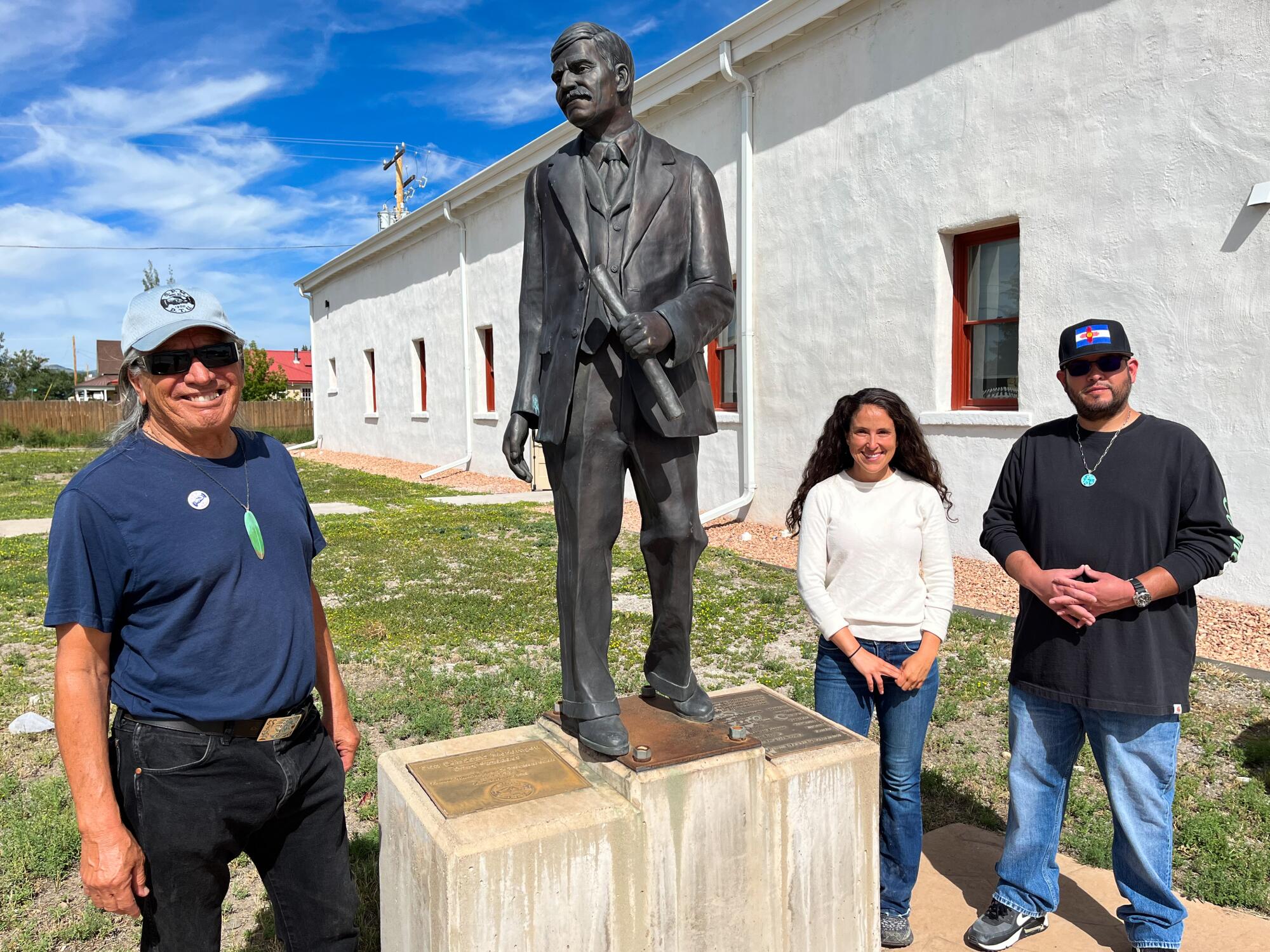
Rogelio Briones, from left, Katie Dokson and Mike Sisneros flank a statue of Celedonio Mondragón, a founder of the Sociedad Protección Mutua de Trabajadores Unidos, in Antonito, Colo. Briones, Dokson and Sisneros are members of the organization.
(Gustavo Arellano / Los Angeles Times)
Latinos have organized to combat racism for almost as long as we’ve been in this country. But when we think about Latino civil rights, who thinks of southern Colorado?
The next morning, a trio of members was ecstatic to see me at their recently refurbished headquarters, which will turn 100 next year.
“We’ve spent years trying to get media to cover us,” said Katie Dokson, a small-business owner in nearby Alamosa whose family has lived in the San Luis Valley for seven generations. She and others are working on a research project about a 1914 school desegregation case backed by La Mutua that was among the earliest of its kind in the country.
“We’re the birthplace of Colorado, but the state has never treated us like that,” added Mike Sisneros, vice president of Alamosa’s La Mutua chapter and also a seventh-generation San Luis Valley resident. He wore a turquoise pendant and a hat that replaced the “C” in the Colorado flag with the Zia sun symbol from New Mexico’s flag.
La Mutua formed in 1900 as a secret society to assist members fighting against the theft of their land and water rights. They also banded together to provide one another with financial aid and money for funerals, just as people in Chinese, Black and other marginalized communities did.
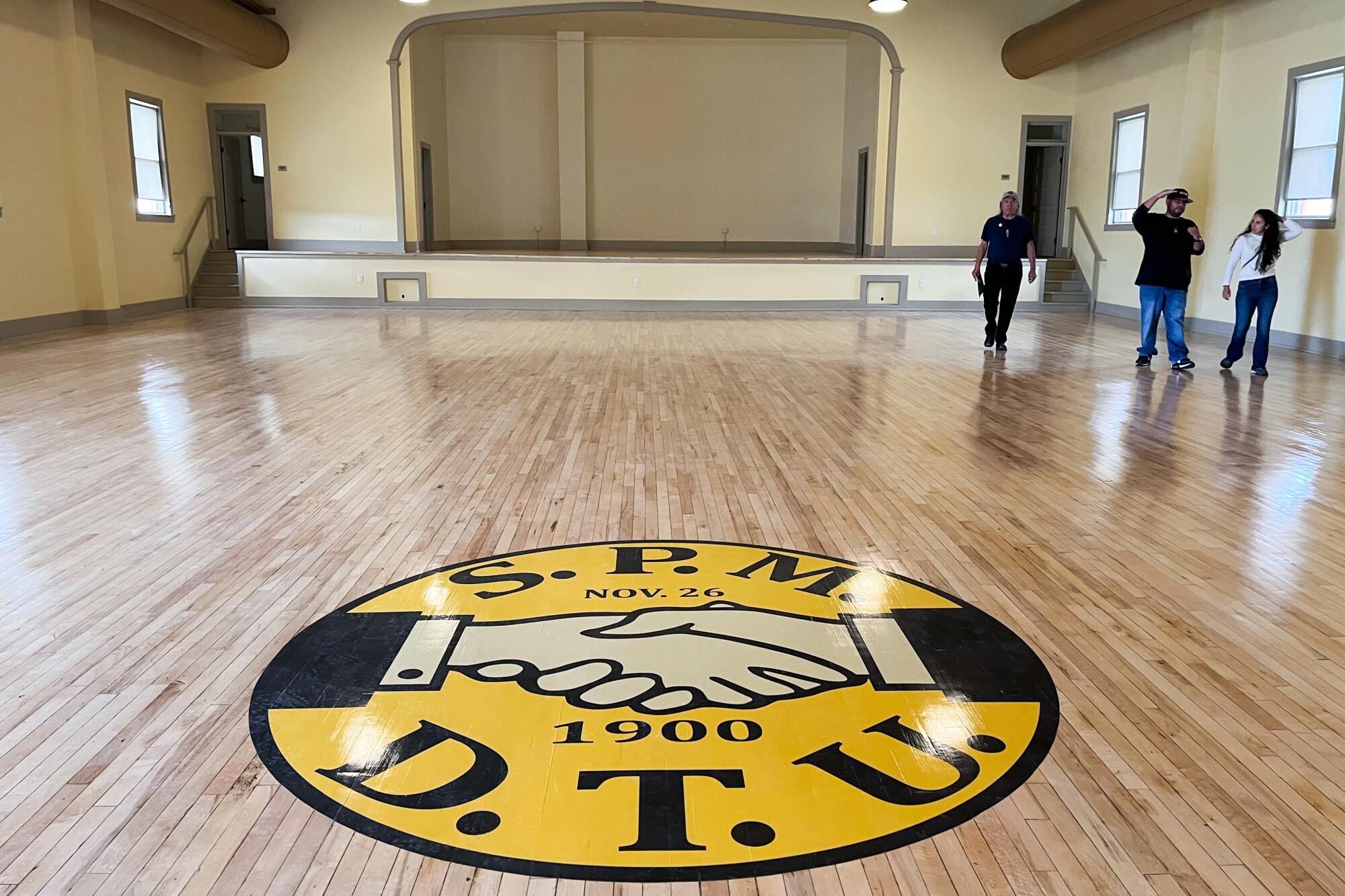
“I’d see this imagery and wonder what it was. And we kids would come here and joke about the acronym,” member Mike Sisneros said of the organization’s initials.
(Gustavo Arellano / Los Angeles Times)
“Then we started selling life insurance policies, because no one else would sell it to us, because we were all full of tuberculosis, and we were a mongrel race of Indian blood and Mexican blood,” deadpanned Rogelio Briones, a former La Mutua president, who led me on a tour of the headquarters.
Everything gleamed: New kitchen equipment. A small exhibit dedicated to the group’s history in what used to be a carpet-covered office. Original wooden ceiling beams. A large hall, once used for private dances, parties, boxing matches, movies and rollerskating, continues to serve as a meeting space for the local chapter and La Mutua’s lively annual convention and is also available for rent to the public.
By the time Sisneros moved to the San Luis Valley in the 1990s as a teen from Denver, La Mutua was declining. Members had died or moved away. The descendants of manitos who moved to cities assimilated into the larger Mexican American culture. The Antonito headquarters — listed on the National Register of Historic Places — began to disintegrate.
“I’ll be blunt,” said Sisneros, a 43-year-old healthcare provider recruiter. His great-great-grandfather, Eligio Ruybal, was among the signers of La Mutua’s preamble. “As a young adult, you didn’t like the group because they wore the cloak of secrecy, and they didn’t tell us what they were doing.”
We’re the birthplace of Colorado, but the state has never treated us like that.
— Mike Sisneros
We looked down at La Mutua’s logo emblazoned on the main hall’s hardwood floor — “S.P.M.D.T.U.” bracketing two clasped hands. “I’d see this imagery and wonder what it was. And we kids would come here and joke about the acronym,” he said.
Some Poor Mexican Died Tied Up. Somos Perros Mantenidos de Todos Ustedes — We’re dogs taken care of by all of you.
“A lot of youth don’t even know what this is today,” Sisneros continued. “When I tell my daughter I’m doing this, she says, ‘Dad, you’re going to one of those viejito [old person] meetings.’”
“I got a better acronym,” suggested Briones, 74, a retired educator. He was one of the La Mutua members who helped stop the Department of Energy from transferring nuclear waste from Los Alamos National Laboratory onto rail cars in Antonito 15 years ago.
“Some. Proud. Mexicans. Decided. To. Unite.”
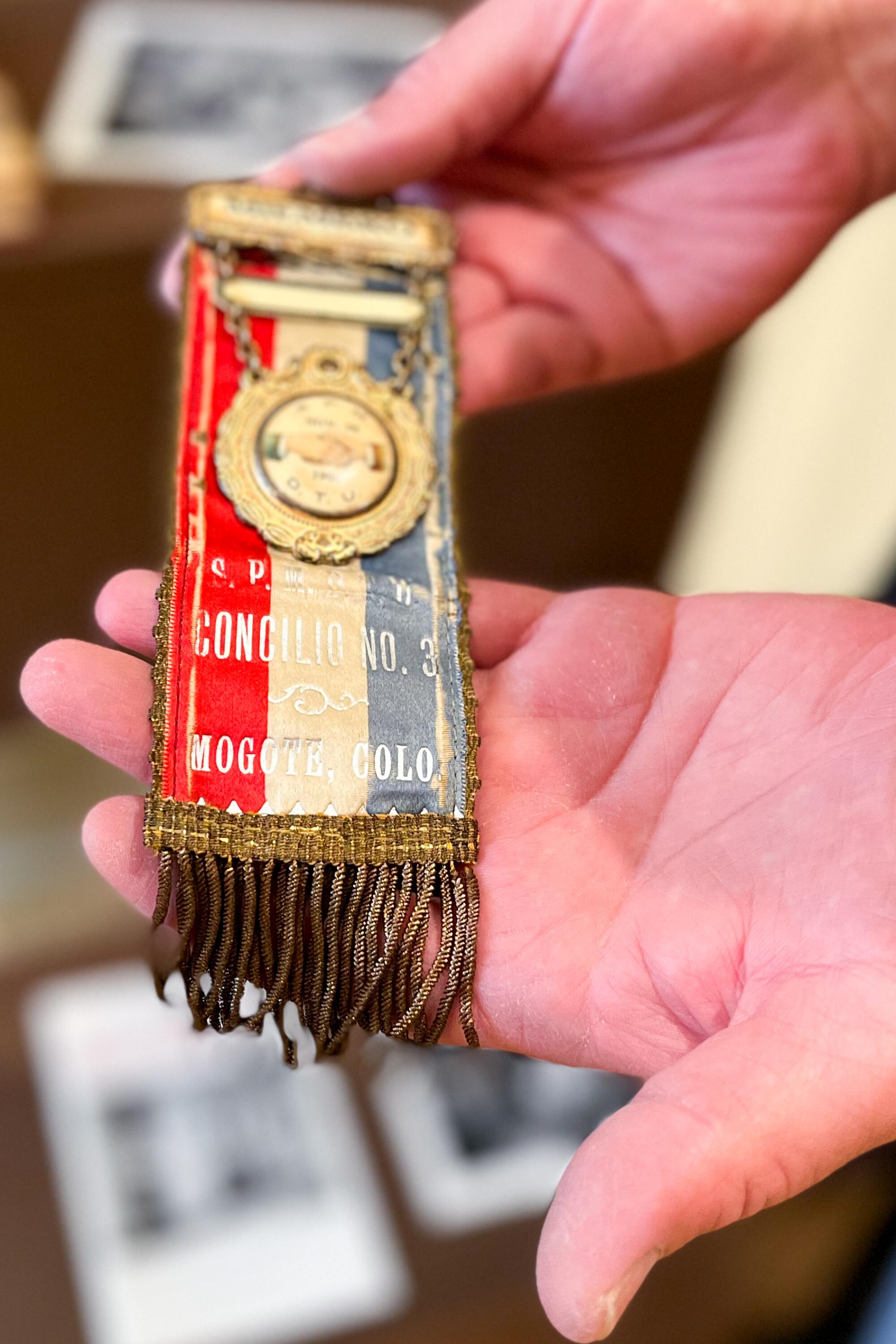
Mike Sisneros holds a 105-year-old membership badge of the Sociedad Protección Mutua de Trabajadores Unidos at the group’s headquarters in Antonito, Colo. Sisneros is the vice president of the group’s branch in Alamosa.
(Gustavo Arellano / Los Angeles Times)
“That’s right!” the 42-year-old Dokson exclaimed. She joined La Mutua last year after discovering while working on the Alamosa school desegregation case that family members had once belonged.
We went upstairs to what used to be a projection room.
“There was mounds of dust and a dead pigeon just a year and a half ago,” Sisneros said.
That’s around the time La Mutua won grants totaling over $2 million to refurbish the headquarters. The projection room is now a huge studio apartment complete with new appliances. La Mutua will lease it for free to anyone willing to be the building manager and handle renting out the space.
Did I know anyone in Los Angeles who might be interested?
“It’s nicer than my house,” joked Briones. Then he got serious.
“This is la cuna donde nació,” Briones said — the cradle where La Mutua was born.
I asked them why La Mutua had sprung up here and survived for so long.

An display dedicated to the history of the Sociedad Protección Mutua de Trabajadores Unidos at the group’s headquarters in Antonito, Colo.
(Gustavo Arellano / Los Angeles Times)
“We have a land base here, and people have been able to keep it by fighting for it,” Dokson said. “People see stuff on a global scale, and that’s good. But you could do the most on the local level. We have a duty to teach people to protect themselves, because things really haven’t changed.”
La Mutua is looking for a renaissance at a time when manitos need it more than ever. Real estate groups are buying homes and farms, driving up prices and making life tough for those who remain. A dam is being proposed, along with a $400-million pipeline that would take water from the San Luis Valley and channel it to the Denver metropolitan area.
Group members are involved in efforts to fight back, and they also do more quotidian things, from awarding scholarships to high school students to digging ditches on one another’s properties.
More than anything, they’re trying to revive manito pride while trying to figure out how to keep them in their homeland.
“There’s no employment opportunities anymore in these towns,” Briones said.
I mentioned national politics. Conejos County, where Antonito is located, went for Donald Trump in 2016 and 2020, while Colorado chose the Democratic nominees.
I know great farmers who are Democrats, and I know great farmers who are Republicans, and at the end of the day, their political affiliation doesn’t matter.
— Katie Dokson
“It’s almost impossible to elect a Democrat here,” Briones said, blaming the conservatism of Latter-day Saints members, long the power brokers in the area. “If I had to vote, it would be anybody but Trump, but that’s not saying much about the Democrats.”
Sisneros wouldn’t share whom he was voting for, but “it will not be [Donald] Trump.” Most Latinos here actually lean blue but are too turned off by politics to vote, he said.
Dokson scrunched her face. She plans to “vote my conscience on election day.”
“I know great farmers who are Democrats, and I know great farmers who are Republicans, and at the end of the day, their political affiliation doesn’t matter,” she told me. “All of them are just trying to get their crops grown, keep equipment in working order and get food to your table for dinner.”
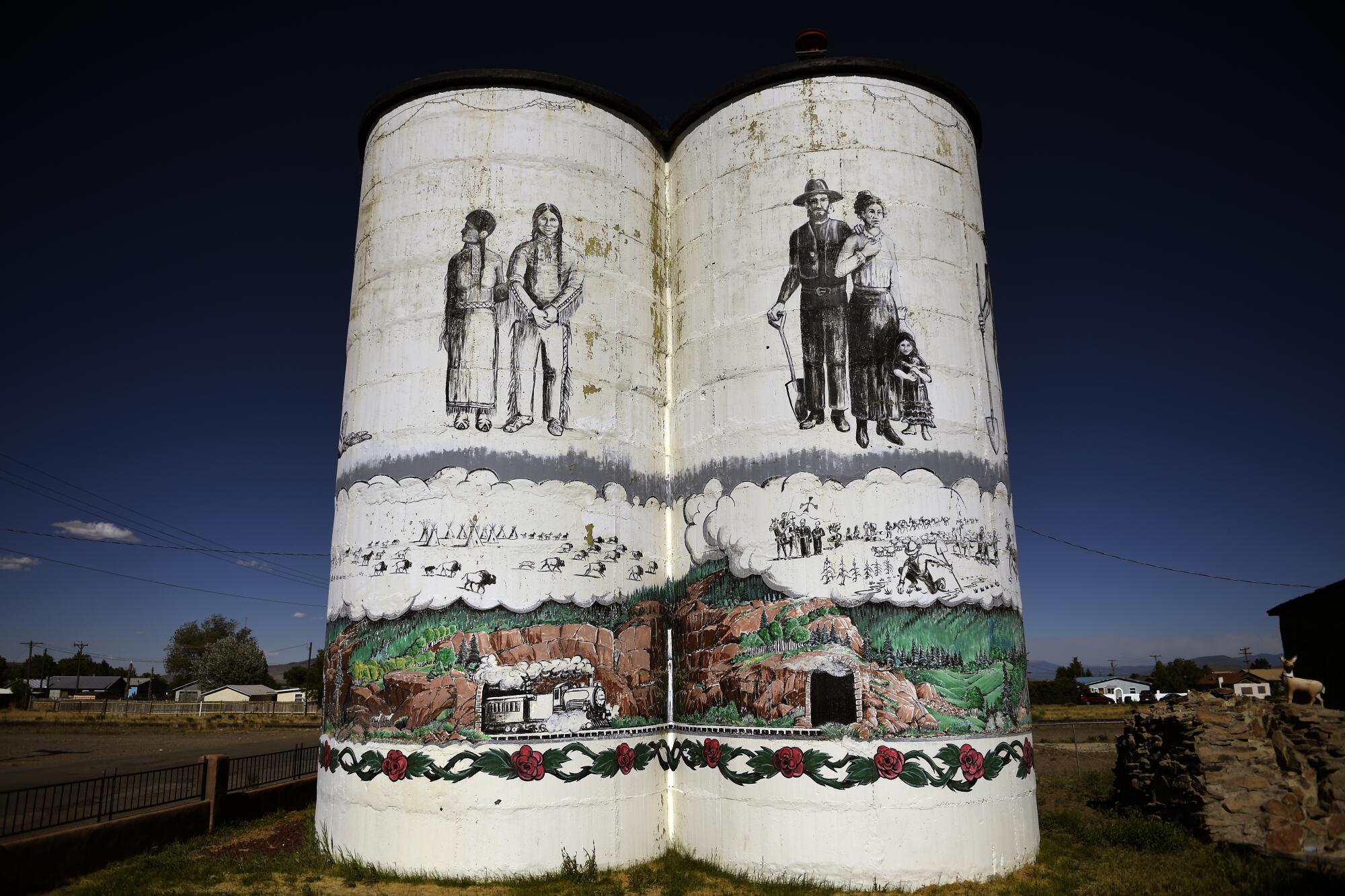
Fred Haberlein murals decorate the town of Antonito as they do in many other Colorado towns.
(Joe Amon / Denver Post via Getty Images)
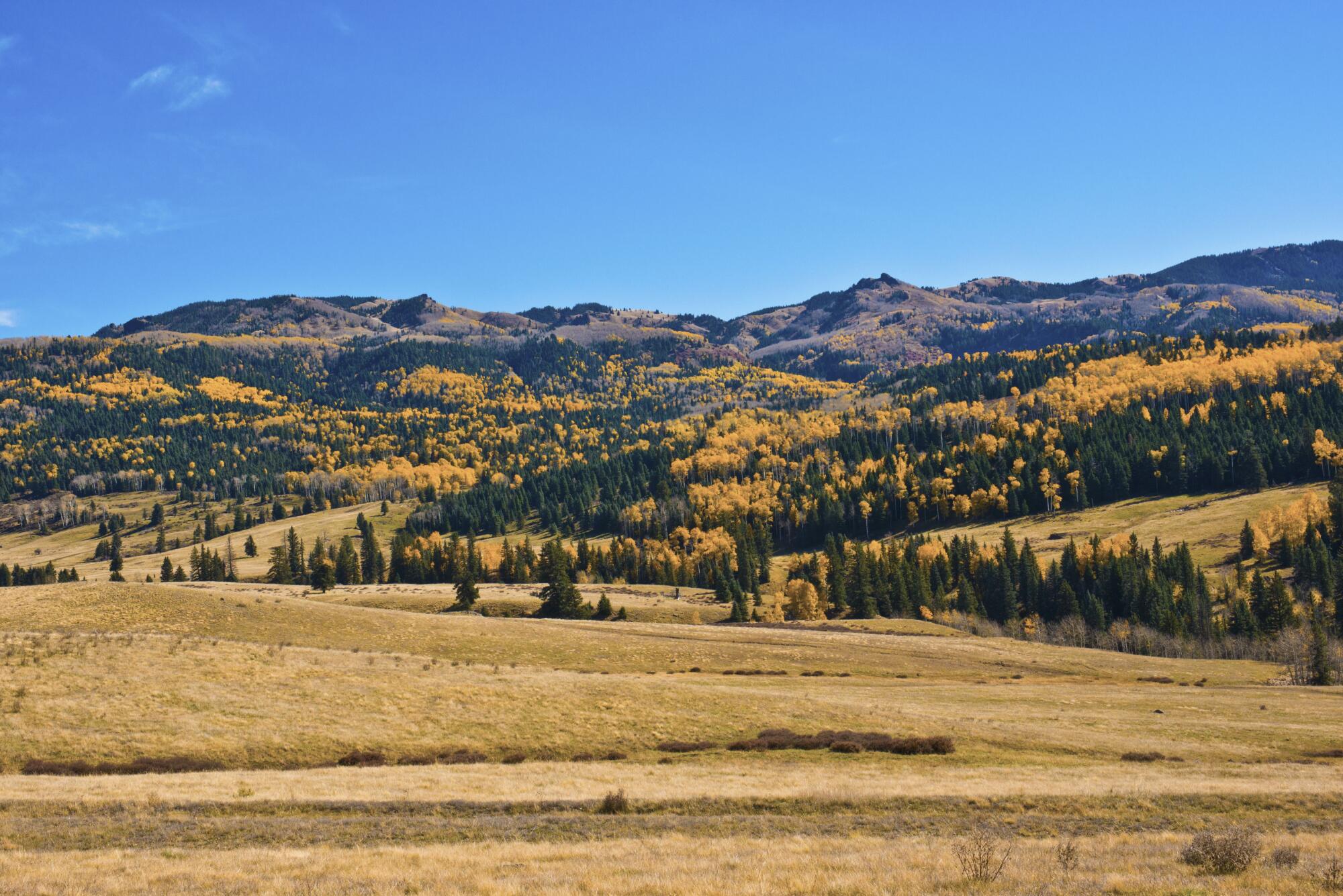
The fall landscape along State Highway 17 between Chama, New Mexico and Antonito, Colo.
(Education Images / Universal Images Group via Getty Images)
Before I left, I took a photo of La Mutua headquarters, shining in the bright morning sun. I texted it to some Chicano studies professors, asking whether they had heard of the group.
Not one had.
We Americans easily forget our history even as we claim to value it. Latinos, in particular, draw upon the struggles of our past to forge a better future. But too often, we look to the big names and the big cities for heroes and inspiration.
How much better equipped would we be to fight back against those who seek to hurt us if we also knew about La Mutua?
Outside Antonito, the terrain transformed from meadows to tree-covered mountains. In San Luis, the oldest town in Colorado, banners shouted out some of the region’s pioneer manito families. Otero. Roybal. Maestas.
I’ve heard nearly everyone say this presidential election is the most consequential in U.S. history. It’s important, of course. But all politics is local, as the cliche goes.
What should matter more than whom your neighbors vote for on election day is whether they stand with you the other 364 days of the year.
That’s La Mutua’s way.

